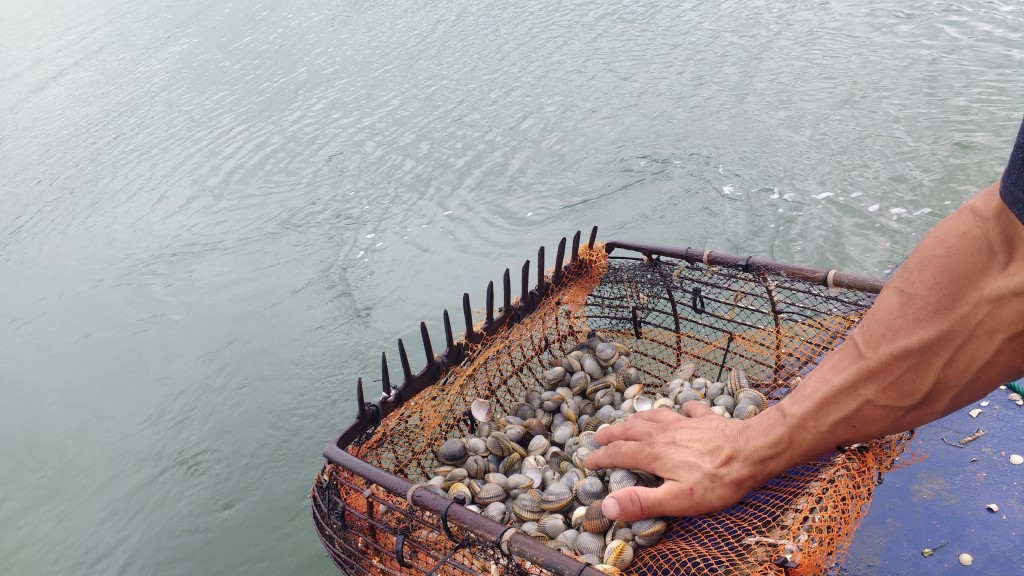
ABOUT COCKLE
Cockles (Cerastoderma edule) are bivalve molluscs with two heart-shaped, predominantly white valves with a series of 22 to 28 ribs and a siphon-shaped protrusion used for locomotion and for feeding by filtering water to obtain phytoplankton.
Their characteristically low fat content makes cockles a low-calorie food, while their cholesterol content is low compared with other shellfish species.
Another advantage of cockle consumption is their high iron levels, due to which they are recommended in case of iron-deficiency anemia.
This is a fast-growing, short-lived species with a life span of approximately three years.
Cockles reach commercial size during their first year of life and, in the Ria of Noia, they achieve premium-grade sizes during their second and third years of life.
Their size and quality are recognized worldwide, both because of the exceptionally good natural conditions of their habitat and because of the totally artisanal and traditional harvesting methods.
HARVESTING METHOD
Cockles are harvested using traditional artisanal methods, either from boats, in the case of on-board shellfishing, or working on foot, in the case of on-foot shellfishing. It is worth noting that the latter activity is performed almost exclusively by women.
The gear used for cockle harvesting is called a ‘cockle basket rake’ (‘rastro de berberecho’) and must comply with the following specifications:
| Cockle basket rake | |
|---|---|
| Spacing between wires, mm | 20 mm |
| Hoop, cm | 54 cm |
| Tine length, cm | 6,5 cm |
THE RESOURCE MANAGEMENT AND EXPLOITATION PLAN
The Noia Fishers Association manages the country’s most important cockle harvesting grounds under an administrative license regime.
In addition to those shellfishers belonging to the Noia Fishers Association, shellfishers from the Muros, Porto do Son, and Portosín Fishers Association also work in these areas.
The shellfish harvesting season spans from September to March, although the high season runs between September and December.
COMMERCIALIZATION: THE TESTAL AND O FREIXO FIRST-SALE MARKETS
Shellfish is publicly sold in a descending-price auction. First-sale markets are equipped with grading machines for accurate cockle size grading; those below market size are returned to the sea. Cockles are divided into four size categories: sizes 1, 2, 3 and 4, each one reaching different market prices.
The legally established minimum market size for cockle is 28 mm.

